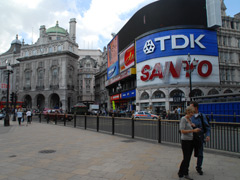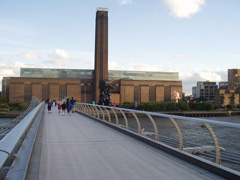


Although London is without a doubt a huge city, the centre itself is fairly compact, which makes it easy to see a lot of the main attractions if you target specific areas. That’s why we’ve handily grouped them together so you won’t need to walk for more than 10 minutes in any direction to get from place to place.
Westminster
Starting from Westminster station, if you walk up to Westminster Bridge you’ll see the iconic Big Ben, the Houses of Parliament and Westminster Abbey, where many a royal wedding has taken place. If you head back towards Parliament Street and walk north, number 10 Downing Street, where the Prime Minister lives, is on the left. Continue along Whitehall past government buildings like the Ministry of Defence and you’ll reach Trafalgar Square within a few minutes. Admiralty Arch, which is soon to become a luxury hotel, is to your left, and behind it is The Mall, the road that leads to Buckingham Palace, roughly a 20 minute walk away. Art lovers can check out the National Gallery and National Portrait Gallery, both directly behind Trafalgar Square.
The Southbank
Alight at Waterloo station and take the exit marked “Southbank”. The first building you’ll see will be the Royal Festival Hall to your right, adjacent to the Queen Elizabeth Hall. Both these venues host concerts, and occasionally there are free lunchtime performances. The Hayward Gallery, which hosts contemporary art exhibitions, and the National Theatre also form part of the Southbank. If you’re not in a cultural mood you can take a ride on the London Eye, a sort of ferris wheel from where you’ll get stunning views over the city (book tickets in advance as the queues can be very disheartening). If you’re travelling with kids, or just like aquariums, there is a branch of Sea Life opposite the Eye, but before you head inside take a moment to look over the Thames. Across the river is the futuristic MI6 building, and the Houses of Parliament and Big Ben are to your left. If you choose to you can cross to the other side via the Millennium Bridge – it’s completely safe now, but when it was first unveiled in 2000 it swiftly closed as it was swaying from side to side. \n\nWest End
The West End is home to shops, theatres, bars and nightclubs, but it’s also a tourist haven so don’t expect to meet many Londoners if you end up in a club by Leicester Square. Starting at Covent Garden tube station, you have the option of browsing the clothing shops along Long Acre and Floral Street or heading to Covent Garden Piazza, home to a covered market, the London Transport Museum and where mime artists and other performers turn up most days. Heading west down Long Acre will take you to Leicester Square, famed for its cinemas, where many high profile film premiers are held. There are also several fast food outlets as well as the Hippodrome Casino and a few glitzy nightclubs. The narrow streets that lead north of Leicester Square form part of Chinatown, home to Asian restaurants and supermarkets. Further West is Piccadilly Circus, where you’ll find the iconic statue of Eros and a huge neon billboard, as well as the Trocadero, an amusement arcade, and throngs of tourists all year round. The area north of Piccadilly Circus is Soho, once famed for its sex shops and peep shows, not that they’ve disappeared completely, but nowadays it’s also home to film companies, gay bars, and some very good places to eat. Oxford Street is the busy shopping street that borders Soho, with all the high street shops you can imagine. It is 2.4 km long, but has four tube stations and plenty of bus stops for you to get around with ease.
Museums
If museums are your thing, South Kensington has several within close proximity of each other, all very different in nature. They’re also a stone’s throw away from the tube station. The V&A specialises in decorative arts and has a strong focus on fashion (also don’t miss the floor devoted to antique musical instruments). The Natural History Museum has plenty to interest biology fans including fossils and dinosaur skeletons, and the Science Museum has everything from psychology to agriculture. All three museums are vast, so don’t try to do them all at once; best of all entry is free (except for temporary exhibitions) so you can come back to do the bits you didn’t get time for. \n\nView from a comfortable place
You don’t need to walk for miles to see the city. These places offer panoramic views from comfortable seats (or at least a bench).
The restaurant at Tate Modern is on the 6th floor, and has great views of St. Paul’s Cathedral and the City.
You can practically see all of London from Duck & Waffle, on the 40th floor of the Heron Tower.
The top of Primrose Hill offers a view of Canary Wharf, the London Eye and the BT Tower in the distance, while from Greenwich Park you can also see Canary Wharf and the City of London.
Getting around without walking
The bus is the most scenic mode of public transport, check out our feature on the most interesting routes here. If time is of the essence the fastest mode of transport is the tube, although you won’t benefit from having a view. Last but not least is the overground, although there are few trains that run through central London.


